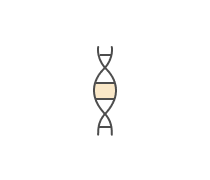What controls executive functions?
The _______ cells are to myelin in the CNS as _______ cells are to...
What does the longitudinal fissure separate?
If someone had a deficit in sensory and perceptual, what lobe may be...
In which lobe does auditory processing and memory occur?
Which structure of the brain is important in Parkinson's?
Which of the following is not true of CSF?
Areas where grey matter cover the CNS are called?
The limbic system is comprised of:
What is the function of the brainstem?
Failure of the caudal neural tube to close may be due to lack of folic...
Where is cerebrospinal fluid produces and which ventricle has the most...
Of the three functional classifications of a neuron, what makes up the...
Dendrites carry _________ information
Anosmia is a dysfunction often linked to which cranial nerve.
The sensory part of the spinal cord is the:
What is the fold of dura mater that separates the cerebral cortex from...
The MCA supplies what part of the brain:
Which fibers of the optic nerve cross at the optic chiasm?
Name types of macroglia.
What types of neurons are found in the retina?
Which Cranial Nerve is not entirely motor?
Where does the anterior horn of the lateral ventricle lie?
What is the largest commisure we have?
Failure of which neural tube to close results in myelomeningocoele?
What is the hippocampus shaped like?
When a person injures the ______ lobe, they may lose the ability to...
Why is the periaqueductal grey important?
What is the most common tumor of the CNS?
The superior and inferior colliculi are collectively known as the:
Which is not a function of a neuron?
The cingulate Gyrus is sometimes called the ________ and represents...
Which type of hydrocephalus is caused by built up fluid or lack of...
Which of the following is not part of the basal ganglia?
What is true of Cranial nerves 1 & 2?
What is the lobule on the medial surface of the brain that controls...
The nervous system develops from one of the germ layers that is...
What is the mechanism of tPa?
What is a common neurological principle that is used following a TBI?
Greater than 20% of tumors in middle aged adults are:
Where does the infundibulum run between?
What is the only cranial nerve that exits dorsally?
If CN III was damaged, which way would the eyeball drift?
The part of the ventricular system in the region of the cerebellum and...
Which of the following is not true?
The fold of the dura that goes deep in the longitudinal fissure is...
Which cranial nerve supplies the lateral recuts?
What is the tissue that was once the front of the neural tube called?
What is the space between the 3rd and 4th ventricle called?
The posterior division of the spinal cord is known as the _____ plate....
Where are the cerebral peduncles on the brainstem?
What diseases if characterized by a bottoming out, sudden weakness,...
Which of the following is not a sign of nerve injury?
In the following picture, what do 1 and 2 refer to, respectively?
Which of the following is not part of the tegmentum?
The posterior limb of the internal capsule runs between what two...
What is an example of a GSE?
What supplies the dura mater?
Which Cranial Nerve exits anterior to the olives of the medulla?
What is an important midline structure in an MRI?
Where does the DRG come from and what type of neuron is it?
What represents up to 30% of all brain tumors?
What does a Tinel's sign let you do?
____________ is the most important layer for mechanical protetcion,...
Which neurons are the most common type?
What divides the alar plate from the basal plate?
Signals from the huppocampus to the mamillary bodies are carried by:
The substantia nigra and red nucleus, collectively, are known as:
What creates the uncus?
What is the most common form of stroke?
What is the most benign type of astrocytoma?
The descending fiber bundle that forms a large bulge on the front of...
Where do projection fibers run?
Where does cerebropinal fluid exit?
Of the following, which has the worst potential for recovery?
Which structure is important for descening motor fibers to our flexor...
What are essentual for motor learning?
The _________ is the wall of the third ventricle, the ________ is the...
The ventircular zone becomes the ___________ layer, the mantle zone is...
What does the calcarine sulcus separate?
When a peripheral nerve is injured, degeneration occurs in a distal...
According to Sunderland, a Type III injury of nerve involves these...
What is the primary difference between a neuron and glial cells?
When and how does the neural tube close?
What makes a nerve pathway a "special" one?
Brodman's Area 3,1,2 responds to the ____________ Gyrus that is...
The brain has sensory innervation.
The venous sinus that bissects the cerebellum is called _____ and the...
When is synaptogenesis most active in life?
The pooling of CSF is often called:
What supplies the precentral gyrus?
EPSP and IPSP are ___, _____, & _______
What is the venous sinus that lies atop the corpus callosum?
















